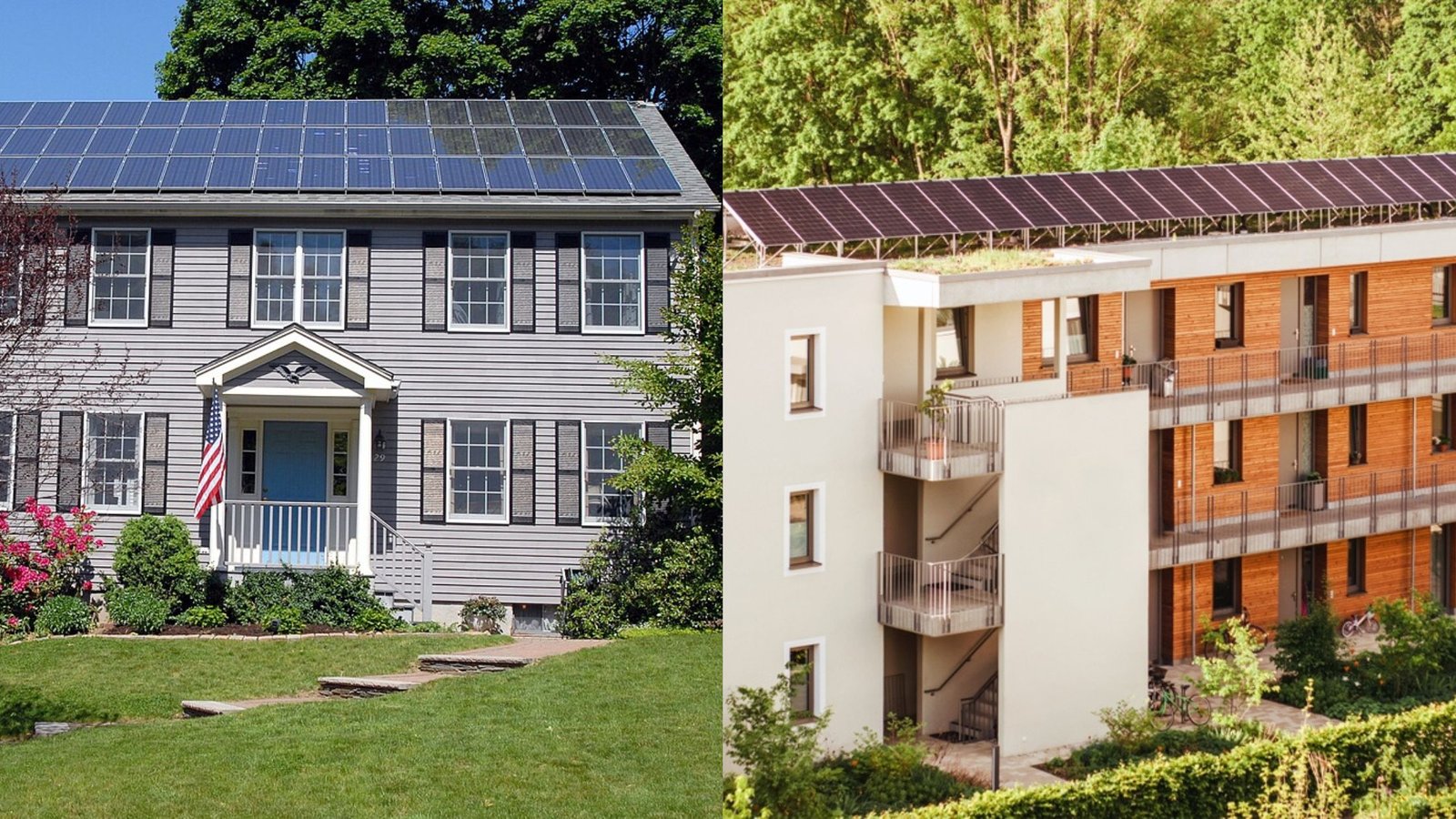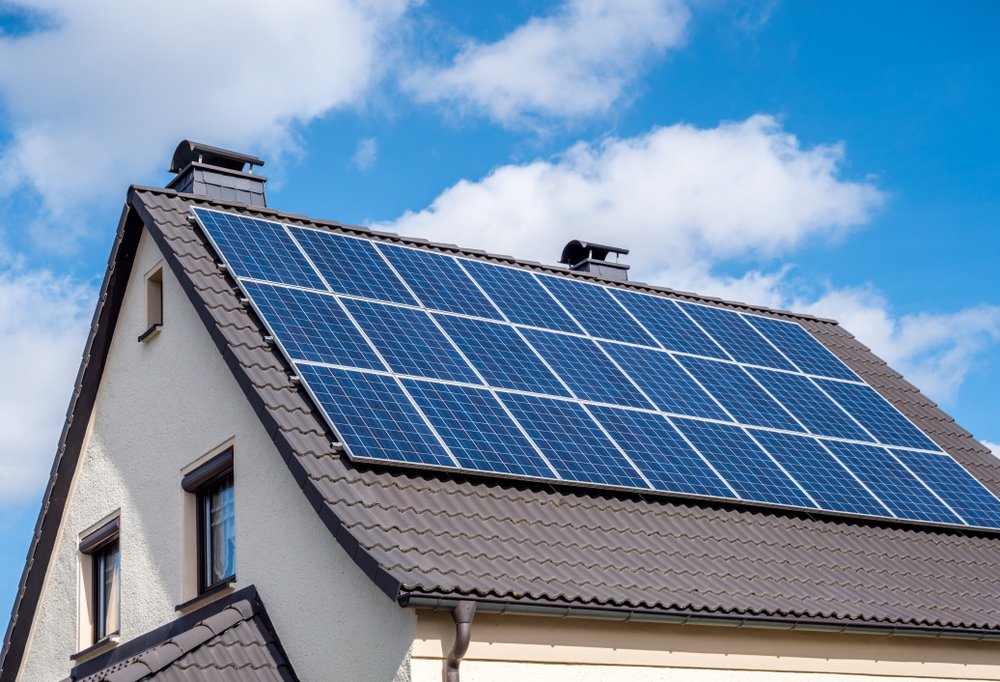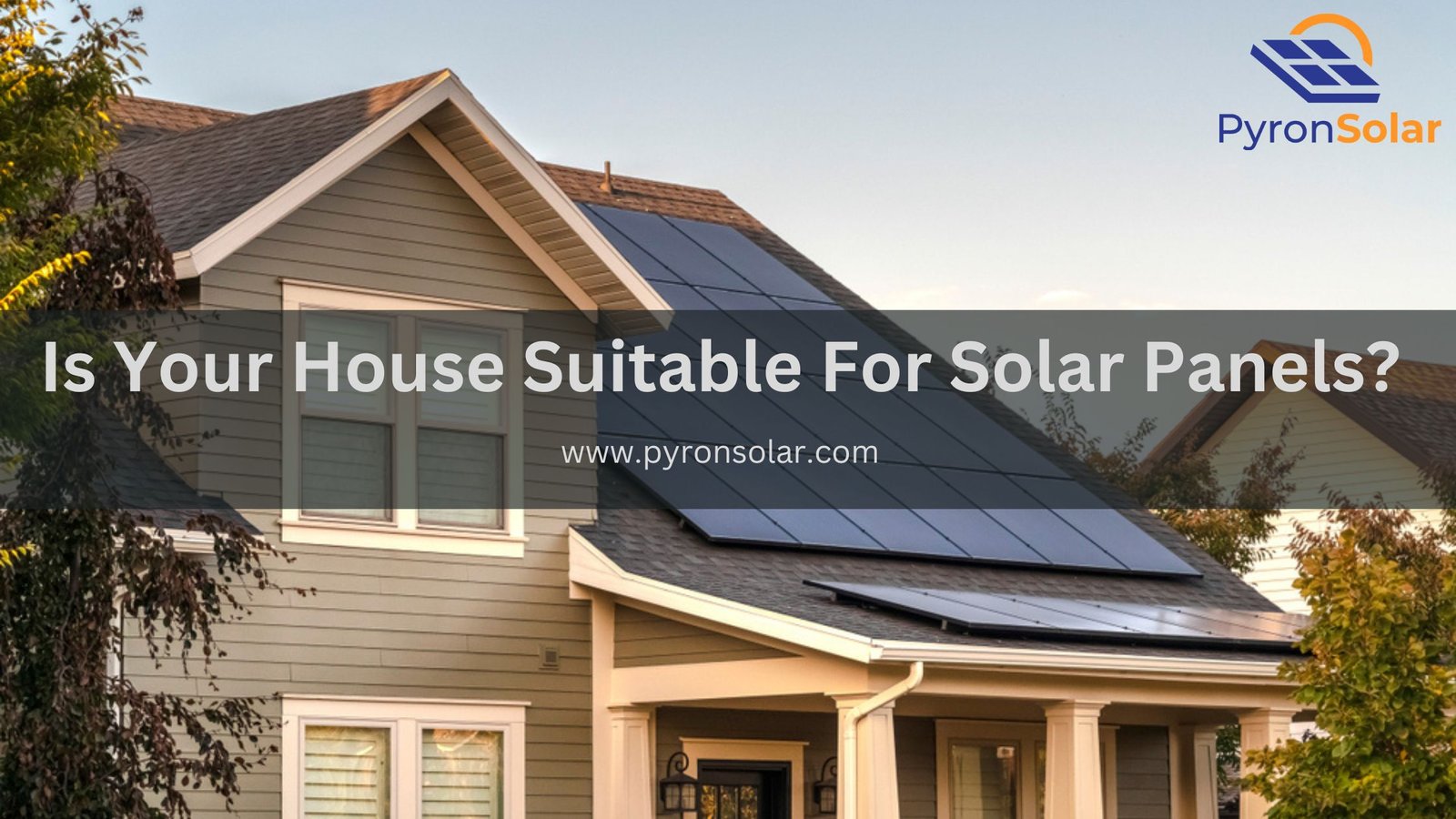Absolutely Yes, It is the best time to go for solar power as it rapidly gaining popularity and becoming inexpensive, thereby offering the best low-carbon technology to harness renewable energy from the sun, which makes it the best option for home purposes. Also, the increasing awareness of climate fluctuations and the demand for sustainable energy sources has emerged as a promising solution.
Before going for solar, you need to consider these factors such as suitability for house types and ownership, electrical energy efficiency requirements, local climatic conditions, federal and state incentives, environmental impact, budget of solar panels and potential cost savings. Additionally, you will understand other important roofing aspects in this article, including material requirements, size, direction, shading, angle and orientation. Consequently, you can analyze whether your roof strength is strong enough to hold solar panels or not!
Home Type & Ownership

Specifically, individuals who own or rent condo units find it challenging to install solar panels due to limited space, shared ownership, renting limitations, acquiring HOA approval, less efficiency and high cost.
However, there are several alternatives for those people who find it difficult to install traditional solar panels such as:
1. Community solar panels allow low-income earning users to pay a share of the electricity generated by the community solar project thereby offering huge benefits like resilience during blackouts or unpleasant weather conditions, community buildings, and local job creation.
2. Portable solar panels can be used in residential buildings, hiking and travel that are easily foldable. Though these panels don’t produce much power, they help reduce your electricity bills.
3. Green Power and Renewable Energy Certificates (RECs) are separately sold by utility companies from electricity. It is a rating to prove that the power is produced from a renewable energy source and added to the grid.
Energy Efficiency
Typically, a home energy audit is a process of evaluating energy usage and helps to find chances to improve efficiency and minimize costs in the upcoming solar panel system designs.
There are several benefits of such audits where you can identify the situations where the energy is being wasted and how to reduce the usage by effective methods. As a homeowner, you can make informed decisions to plan for energy-efficient upgrades and analyze if solar is right for you or not.
Energy audits frequently recommend certain measures to increase energy efficiency. For example, promoting energy-efficient lighting such as LED lights can minimize electricity consumption. Also, the upgrade of insulation with weatherstripping and additional modifications can diminish the costs of heating and cooling.
Most importantly, leaky ducts can cause energy losses, and it becomes important to seal the ductwork to enhance the efficiency of HVAC systems as well as other energy-consuming equipment that are either highly inefficient or use outdated technology.
Replacing outdated appliances with highly efficient modules not only reduces electricity consumption but also lowers your utility bills and reduces greenhouse gas emissions.
Home electrification is a process of modernizing the systems to perform using electricity instead of fossil fuels, thereby offering high energy savings and lowering carbon emissions. For example, switching from a gas stove to an electric one is one type of electrification process. As a result, the global methane emissions are minimized. Also, natural gas is expensive, toxic, and dangerous to use.
Electricity Costs
The financial viability of going solar can be heavily influenced by a homeowner’s present electricity usage. It is because if a household uses more electricity, there are more chances to generate power through solar panels that can offset the power to be purchased from the grid. Mainly, if the grid electricity is expensive, there will be higher savings in the electricity generated.
Particularly, homeowners with higher electricity bills can benefit the most by adopting solar energy through the strict net metering laws that allow solar system owners to sell any extra electricity generated back to the grid.
The Net Energy Metering (NEM) system helps users receive credits for excess energy generated from renewable sources such as solar panels or wind turbines to offset the power usage from the grid. It also helps reduce the dependence on fossil fuels. For example, if your solar PV system generates 2,000 kWh, but your consumption is 1,800 kWh, then the additional 200 kWh gets credited to your account for future usage. Also, the billing cycle can be done monthly or annually.
Here is a common question that often comes to mind: “Will I Have an Electricity Bill After Going Solar?”
Local Climate
These are the essential local climatic factors that influence the solar panel efficiency such as:
- Latitude: There will be higher efficiency in regions that are closer to the equator and receive abundant direct sunlight.
- Cloud Cover: Modern solar panels are designed to absorb indirect sunlight effectively, especially during cloudy days.
- Peak Sun Hours: The peak sun hours can be found when the intensity of sunlight is 1 kilowatt (kW) per meter square for 1 to 6 hours a day approximately. You can find out the peak hours of sunlight in your area using the Solar Irradiance Meter, Global Solar Atlas and PVWatts Calculator.
However, there are common misconceptions about the viability of solar energy in different climates such as:
- Myth 1: Solar Panels work only when there is abundant sunlight.
- Reality 1: PV panels perform best in cool and humid climates because the heat gets involved in the sunlight-to-electricity conversion process.
- Myth 2: Solar Panels aren’t efficient.
- Reality 2: The efficiency of a standard solar panel is 22-25% Earlier in 2022, the highest efficiency of a solar cell at room temperature was 39%, achieved by the researchers at NREL under normal sunlight conditions. But, such types of solar cells would be too costly for budget-friendly solar panels.
- Myth 3: Solar panels need extreme temperatures to perform well.
- Reality 3: There is a rapid degradation of solar panels when they are exposed to extreme hot or cold temperatures, thereby reducing the overall performance.
Roof Suitability

To determine the roof’s suitability you need to consider some essential factors such as its conditions, materials used, size, shading, directions, angle, and orientation.
Roof Condition
The roof condition for solar panel installation is an essential step to harnessing renewable energy for residential and commercial buildings. So, it is important for proper planning and execution to ensure the longevity and efficiency of the panels. Before that, you need to consider certain factors like the roof’s material, age, condition, and slope to estimate the withstanding ability of extra load.
Typically, the average lifespan of a solar panel is 25 years whereas a few other modules last upto 30 to 40 years.
If you’re a house owner, it is advisable to assess the remaining lifespan of your ageing roof and estimate its replacement period, before installing solar panels.
Overloading your roof with the additional weight of solar panels can cause structural damages such as deterioration, cracks or partial collapse that threaten the security and integrity of your home. This is because the weight of a single solar panel ranges between 33 and 50 pounds per square meter and the installation of 20 panels can weigh 2,000-3,000 pounds.
Solar panels not only provide an additional layer of protection but also extend the roof’s lifespan by avoiding direct exposure to rain, hail and UV rays. These PV panels act as a barrier to minimize the impact of harsh weather conditions and prevent the risk of extreme roof damage.
Roof Material
These are the commonly selected roofing materials that influence the solar panel installation:
1. Asphalt Shingles reduce the need for experienced laborers and specialized equipment, and they come with a 30-year warranty. Do you know there are also solar shingles available in the market now? You can use these solar shingles in place of traditional solar panels.
2. Tile Roofing is often implemented in the US are made of materials like clay, ceramic, metal, synthetic cedar, slate, and concrete impacts the overall solar project cost. For example, solar panel installation on concrete tiles is less expensive than on clay tiles.
3. Metal Roofing with an upright seam is one of the most preferable roofing materials while installing solar panels. The standing seams on the roofs easily integrate with the solar panel array which results in a cheaper cost. Moreover, the recyclable materials are durable to sustain for 30 years.
4. Tar and Gravel roof types are the sheet layers attached from hot tar and roofing felt which needs an additional bracket to be tilted at a 30-degree angle.
5. Wooden Roofs are the flat type surfaces that aren’t recommended for installing solar panels due to fire safety issues.
Roof Size
A small-sized house may require a roof space of 200 square feet whereas a larger home needs a roof space of 1,000 square feet. Based on the simple rule of thumb, every 1kW solar panel require at least 100 square feet.
A larger roof size can help generate more electricity due to the increased number of solar panel installations with proper arrangement.
If the high-efficiency PV panels are optimized strategically on the limited space of a residential building’s roof, there are chances to lower the electricity costs by decreasing the usage from the grid during peak hours. You need to check certain factors such as proper exposure to sunlight, different utility rate structures and varying energy demands.
Shading
Solar panels’ sunlight absorption gets reduced due to continuous shading from trees, buildings, or clouds alters the efficiency. This is because a solar cell getting shaded can minimize the overall output of solar panels.
However, several strategies can be implemented to reduce partial shading which includes
- Trimming the branches of a tree.
- Use a high-quality inverter that has an MPP tracking functionality to drastically reduce output losses.
- Operating only parallel or a combination of parallel and series wiring to ensure losses remain limited only to the shaded panel.
- A solar panel system with microinverters or power optimizers operates independently so that the overall energy production isn’t reduced by just one or two shaded panels.
Despite some shading being manageable, a significant obstruction might hinder the overall output. For instance, if 1/36th of the cells are shaded, then there are chances of reduced power output by 75%.
However, the tracker structures for solar panels are controlled by the backtracking algorithms to alter the angle to maximize the sunlight’s exposure, thereby controlling the position and movement near shading regions between rows.
Roof Angle & Orientation
Before planning for any installation on the roof, ensure the optimal tilt and orientation of solar panels which should always be positive as well as between 0° and 90°. For example, the optimum tilt angle at San Diego is 33°, which will be a permanent angle based on the 32.7° N latitude. Whereas, the tilt angle in San Francisco is 16° from March to August and 59° from September to February taking into account the 37.7° N latitude and 122.4° W longitude.
However, there are several alternatives if your roof does not meet the optimal tilt angle and orientation:
- Advanced panel technology to generate more power per square foot.
- Adjusting the panel to align better with the sun’s direction based on different seasons.
- Panels facing closer to true south (Northern Hemisphere) or true north (Southern Hemisphere).
- Alternative mounting systems such as pole mounts promote panels above the roofline. Other choices include solar carports or pergolas with the dual functionality of providing shelter and electricity.
Roof Direction
The ideal direction while installing solar panels on the roof is towards the south to receive maximum sunlight and optimize power generation.
Especially, the installation of south-facing solar panels in the Northern Hemisphere has several benefits such as increased efficiency, cost savings, consistent power output and reduced carbon emissions.
Additionally, the non-south-facing roofs still support productive solar installation as the panels facing east or west can still produce maximum power with minimized efficiency and varying energy production patterns.
Budget & Incentives
Several Factors such as equipment cost, size and quality of panels, installation expenses, mounting equipment, wiring, permits, incentives, and subsidies are the budget considerations to integrate the solar panel system into the existing electrical system.
Commonly, premium quality Monocrystalline solar panels range between $1 to $1.50 per watt, thereby combining the overall cost of a 400-watt module between $400 and $600.
Financial incentives like the Federal ITC (Investment Tax Credit) reduce the solar panel installation cost, thereby making it much more affordable. In simpler words, if you install a PV system between the years 2022 and 2032, you can easily claim a 30% tax credit. gradually, the percentage reduces to 26% for installing the systems in 2033 and to 22% in 2034. If you have installed a rooftop solar panel system in the year 2022 by investing more than $7,500, then your tax credit should have increased from 22% to 30%.
How Will I Find Out If My Roof Is Strong Enough For Solar Panels Or Not?
There are several ways to determine if your roof is strong enough to withstand solar panels. However, you need to consult either with a structural engineer or solar professional to accurately measure the roof height and width. Ultimately, you also need to evaluate the roof’s structural damage by considering the roof’s age and materials to have a clear idea about your roof’s capacity to support solar panel installations.
Ray is an avid reader and writer with over 25 years of experience serving various domestic and multinational private and public energy companies in the USA.

